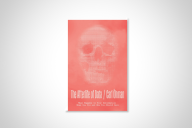You have /5 articles left.
Sign up for a free account or log in.
Early last month I started reading Maria Konnikova’s The Confidence Game: Why We Fall for It … Every Time (Viking) but had to put the book aside under the pressure of other matters -- only to have the expression “con artist” hit the headlines in short order. And in the context of electoral politics, no less, with one Republican presidential candidate applying it to another. (No names! Otherwise people with a Google News alerts for them will just flood into the comments section to rail and vent.)
My notes from a few weeks ago show no inkling that the book might be topical. Instead, I listed movies about the confidence game (the most theatrical of crimes) and dredged up recollections of David W. Maurer’s The Big Con: The Story of the Confidence Man, first published in 1940. A reviewer of one of Maurer’s later books said that while he was “retired as an active professor of English at the University of Louisville” as of 1972, he was “the foremost student of the argots and subcultures in various precincts of the Wild Side … whose easy authority and unerring judgment brought the language and culture of the American underworld to the attention of scholars.” The tribute still stands, although Maurer’s studies of the slang of drug addicts, prostitutes, forgers and pickpockets (many available in JSTOR) are now period pieces: the scholarly equivalent of vintage pulp fiction.
Parts of The Big Con have a Depression-era flavor, but it is the author’s masterpiece and, if not the last word on the subject, certainly the definitive one. Other, lesser criminal subcultures generate argots, but for Maurer the confidence men are the professional elite of the underworld, and their specialized lingo is the concentrated expression of a well-tested understanding of human psychology. Mastery of it distinguishes those qualified for “the long con” (sustained and intricate operations extracting large sums from victims) from, e.g., small-timers running the three-card monte scam on a street corner.
The long con, as depicted on screen, is a marvel to witness. David Mamet wrote and directed the two best movies in this area: House of Games (1987) and The Spanish Prisoner (1997). The latter film takes its name from the quintessential long con, still viable after centuries of use. The contrast between short and long cons is blended into the Oedipal shenanigans of The Grifters (1990), adapted from the novel by pulp-noir virtuoso Jim Thompson, who I suspect read Maurer’s book somewhere along the way. And in a considerably lighter vein there is Dirty Rotten Scoundrels (1988) with Michael Caine as a smooth long-con artist and Steve Martin as the short-con operator who becomes both his nemesis and protégé.
Looking up those dates, I’m struck by the absence from the list of any more recent entry. What we have instead, it seems, is a string of movies such as Boiler Room (2000), The Wolf of Wall Street (2013) and The Big Short (2015), which treat the world of high finance as a racket. The most recent film’s title sounds like a nod to Maurer, and his monograph does cover a classic long con called “the rag,” which involves a phony stockbroker’s office. (There, investors have the chance to get rich through insider trading, or so they think until the office vanishes, along with the suckers’ money.)
“If confidence men operate outside the law, it must be remembered that they are not much further outside than many pillars of our society who go under names less sinister,” Maurer said in a passage that Maria Konnikova, a New Yorker contributor, quotes in The Confidence Game. She moves quickly to give recent evidence for the point, such as the U.S. Department of Justice’s suit against USIS, which she describes as “the contractor that used to supply two-thirds of the security clearances for much of the [U.S.] intelligence community.” The DOJ found that “the company had faked well over half a million background checks between 2008 and 2012 -- or 40 percent of total background checks.” Corruption on that scale lies beyond the most ambitious con’s dreams of success.
Konnikova’s basic argument -- developed through a mixture of anecdotes and behavioral-science findings, after the manner associated with journalist and author Malcolm Gladwell -- is that both the grifter’s manipulative skills and the victim’s susceptibility are matters of human neurobiology and everyday social psychology. She cites an investigation organized by “Charles Bond, a psychologist at Texas Christian University who has studied lying since the 1980s,” who, in 2006, gathered information on beliefs about lying held by dozens of countries in 43 languages. Three-quarters of the responses in one phase of the study identified “gaze aversion” as a signal that someone was lying, while “two-thirds noted a shift in posture, another two-thirds that liars scratch and touch themselves more, and 62 percent said that [liars] tell longer stories. The answers spanned sixty-three countries.” But other studies show that these beliefs -- while cross-cultural, if not universal -- are poor guides to assessing a stranger’s truthfulness. Someone delivering a carefully worded lie while holding a steady gaze and not fidgeting is, in effect, already halfway to being believed (or elected, as the case may be).
Konnikova pays tribute to Maurer’s classic by linking each of her chapters to one of the phases or components of a long con, as itemized in the grifter’s lexicon. The first stage, called “the put-up,” is perhaps the most intuitive: the con artist identifies a mark (victim) by picking up signals of the individual’s interests, personality traits and self-perceptions, and then begins to cultivate casual familiarity or trust. “There’s nothing a con artist likes to do more than make us feel powerful and in control,” she writes. “We are the ones calling the shots, making the choices, doing the thinking. They are merely there to do our bidding. And so as we throw off ever more clues, we are becoming increasingly blind to the clues being thrown off by others.”
Here, the author overstates things, since the talented grifter is also busy creating signals. In a later chapter, she describes a fellow who arrives at a charity event in London, acting a bit drunk and overfriendly and seemingly unaware that he didn’t shave that morning. His mark is woman of the world who knows the type: one of those would-be charming playboys, feckless but harmless, getting by on an allowance from his aristocratic relations. (Suffice to say that she takes a check from him and lives to regret it.)
With the dramatis personae in place, “the play” (the con itself) gets underway. Other characters may have walk-on parts, such as the “secretaries” and “brokers” in a phony stock-market game who get a cut of the criminal profits. The mark is made privy to whatever circumstances the con involves (e.g., a long-forgotten wine cellar full of rare and expensive vintages, an amazing real-estate deal, the chance to get in on the next big invention) and drawn into the secrets and moments of exhilaration that go with this once-in-a-lifetime opportunity.
But the most fascinating and disturbing aspect of a long con is how the con artist manages and redirects any anxieties or misgivings the victim may feel. After the “blowoff” -- when the victim is left with a case of bad wine with fancy labels, ownership of swampland, etc. -- a really well-executed con will leave the mark too embarrassed to complain. (Erving Goffman's classic paper "On Cooling the Mark Out" uses a late phase of the con game as a key to understanding how society at large reconciles the ordinary person to the disappointing realities of life.)
The lab experiments and social-scientific inquiries that Konnikova describes offer plausible (if seldom especially surprising) analyses of the cognitive and emotional forces at work. People prefer to think of themselves as smart, helpful, good judges of character and destined for lives better than the one they’ve settled for, thus far. And someone appealing to those feelings can end up with all of your money and no known forwarding address. Perhaps the most interesting and memorable thing about The Confidence Game is not that researchers can now explain the roots of our vulnerability, but rather the way it confirms something Maurer implied in his book 75 years ago: there’s no one better able to understand the individual human psyche than someone prepared to exploit it, undistracted by the slightest remorse.








